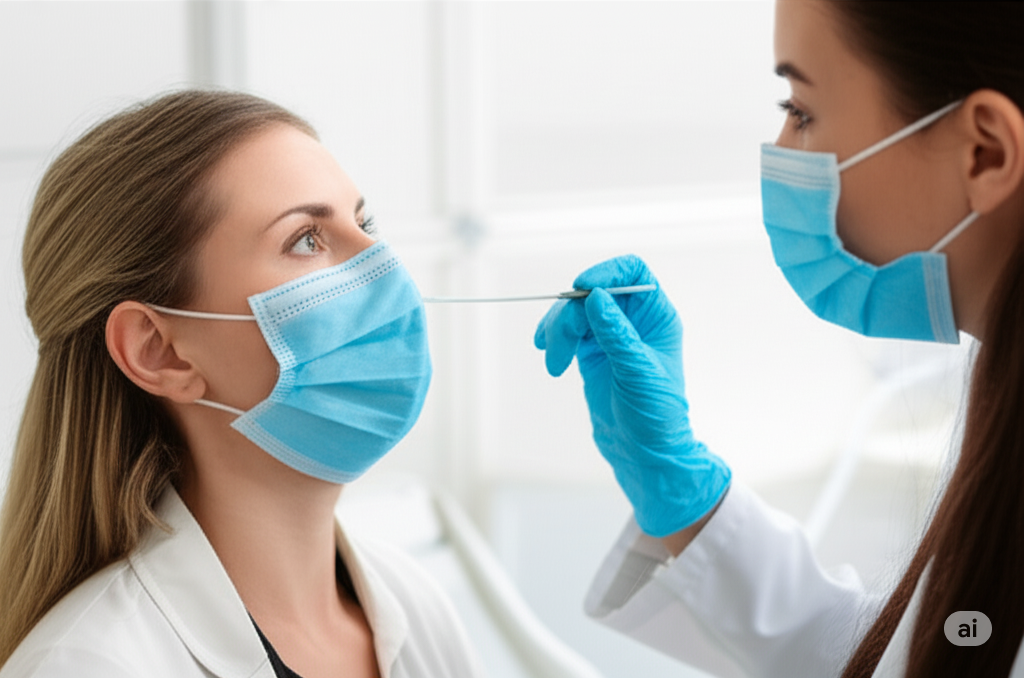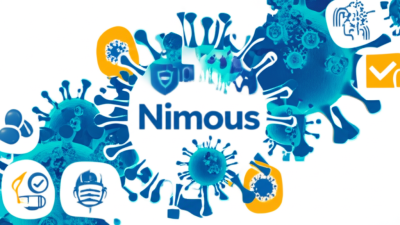Tuberculosis (TB) is a global health challenge, an ancient disease that continues to claim lives despite being preventable and curable. While often associated with historical narratives, TB remains a significant threat, particularly in low- and middle-income countries. This comprehensive guide will delve into everything you need to know about TB, from its causes and symptoms to its diagnosis, treatment, and global impact, equipping you with the knowledge to protect yourself and your community.
What is Tuberculosis? Understanding the Basics
Tuberculosis is an infectious disease caused by a bacterium called Mycobacterium tuberculosis. While it primarily affects the lungs (pulmonary TB), it can spread to any part of the body, including the brain, spine, kidneys, and lymph nodes (extrapulmonary TB).
How it Spreads: An Airborne Threat
Unlike many other infections, TB is spread through the air. When someone with active pulmonary TB coughs, sneezes, talks, or sings, they release tiny airborne droplets containing the bacteria. If you breathe in these germs, you can become infected. However, not everyone who is exposed to the bacteria will develop active TB disease.
The Stages of TB: Latent vs. Active
Understanding the two main stages of TB is crucial:
- Latent TB Infection (LTBI): In this stage, you have the TB bacteria in your body, but your immune system has successfully contained them. You won’t experience any symptoms, and you cannot spread the disease to others. However, the infection remains alive and can become active in the future if your immune system weakens.
- Active TB Disease: This is when the bacteria multiply and make you sick. You will experience symptoms and are contagious, meaning you can spread the disease to others, particularly if the active TB is in your lungs or throat.
Recognizing the Warning Signs: Symptoms of TB
The symptoms of TB can be mild and appear gradually, leading to delays in diagnosis and increased risk of transmission. Common symptoms of active pulmonary TB include:
- A cough lasting more than three weeks, often with mucus or blood
- Chest pain or pain with breathing or coughing
- Feeling tired or exhausted (fatigue)
- Fever and chills, especially in the evenings
- Night sweats (waking up soaked in sweat)
- Loss of appetite and unexplained weight loss
- Feeling generally unwell
If TB has spread to other parts of your body, you may experience different symptoms depending on the affected area. For instance:
- Swollen glands (lymph nodes)
- Body aches and pains, particularly in joints
- Swollen joints or ankles
- Tummy or pelvic pain
- Headaches and stiff neck (if it affects the brain)
When to See a Doctor: It’s crucial to seek urgent medical attention if you experience a persistent cough with blood or mucus, unexplained weight loss, fever, or night sweats, especially if these symptoms last for more than three weeks.
Who’s at Risk? Understanding Risk Factors
While anyone can get TB, certain factors increase your risk of exposure and developing active TB disease:
- Weakened Immune System: Conditions like HIV/AIDS, diabetes, severe kidney disease, certain cancers (e.g., head and neck cancer), and medications that suppress the immune system (e.g., corticosteroids, treatments for rheumatoid arthritis or Crohn’s disease) significantly increase the risk.
- Close Contact: Spending extended time with someone who has active TB disease, such as living in the same household, increases exposure risk.
- Travel or Residence in High TB Prevalence Areas: Countries in parts of Asia, Africa, and Latin America have higher rates of TB.
- Overcrowded or Unhealthy Living Conditions: Homeless shelters, prisons, jails, and other crowded environments facilitate the spread of the bacteria due to poor ventilation.
- Healthcare Workers: Individuals working in healthcare settings where TB patients are treated are at higher risk of exposure.
- Age: Babies and young children, whose immune systems are still developing, are more vulnerable, as are older adults.
- Substance Abuse: Smoking, excessive alcohol consumption, and drug use can weaken the immune system.
- Malnutrition: Poor nutrition compromises the body’s ability to fight off infections.
Diagnosing TB: Getting an Accurate Picture
Diagnosing TB involves a combination of tests:
- Medical History and Physical Exam: Your doctor will ask about your symptoms and exposure history, and perform a physical exam, including listening to your breathing and checking for swollen lymph nodes.
- Tuberculin Skin Test (TST) or Mantoux Test: This involves injecting a small amount of purified protein derivative (PPD) under the skin. A reaction (a firm, red bump) indicates exposure to TB bacteria.
- TB Blood Tests (Interferon-Gamma Release Assays – IGRAs): These tests measure the immune response to TB bacteria in a blood sample and are often preferred for people who have received the BCG vaccine, as the vaccine can cause a false positive TST.
- Chest X-ray: An X-ray can reveal abnormalities in the lungs indicative of active TB disease.
- Sputum Tests: If pulmonary TB is suspected, a sample of your mucus (sputum) will be tested for the presence of Mycobacterium tuberculosis bacteria. This is crucial for confirming active TB and identifying drug resistance.
- Other Tests: For extrapulmonary TB, samples of affected body fluids or tissues (biopsy) may be taken for testing.
The Road to Recovery: TB Treatment
TB is curable, but successful treatment requires strict adherence to a long course of antibiotics.
- Standard Treatment for Drug-Susceptible TB: This typically involves a combination of several antibiotics (commonly isoniazid, rifampicin, pyrazinamide, and ethambutol) taken for at least six months. It is vital to complete the full course of treatment, even if you start feeling better, to kill all the bacteria and prevent the development of drug-resistant TB.
- Treatment for Latent TB Infection (LTBI): If you have latent TB, your doctor may prescribe antibiotics for a shorter duration (e.g., 3-4 months) to prevent the infection from becoming active. This is especially important for individuals at high risk of developing active TB.
- Drug-Resistant TB (DR-TB): This occurs when the TB bacteria do not respond to the standard first-line drugs. DR-TB requires a longer, more complex treatment regimen with different, often more toxic, antibiotics, sometimes lasting 12 to 24 months or more. Directly Observed Treatment, Short-course (DOTS) is a global strategy where a healthcare worker or trained volunteer observes patients taking their medication to ensure adherence and improve cure rates.
Preventing the Spread: Taking Action Against TB
Prevention is key to controlling TB:
- Early Diagnosis and Treatment: Prompt diagnosis and effective treatment of active TB cases are the most critical steps in preventing transmission.
- BCG Vaccine: The Bacillus Calmette-Guérin (BCG) vaccine is given to infants in many countries to protect against severe forms of TB, particularly in high-burden areas. It does not offer consistent protection for adults against pulmonary TB.
- Good Hygiene: Covering your mouth and nose when coughing or sneezing, and encouraging others to do the same, helps contain the spread of airborne droplets.
- Ventilation: Ensuring good airflow in living and working spaces reduces the concentration of airborne TB bacteria.
- Avoid Close Contact: Minimize prolonged close contact with individuals suspected of having active TB, especially in confined spaces.
- Strengthening Immune Systems: Maintaining a healthy lifestyle, including a balanced diet and managing underlying health conditions, helps support a strong immune system.
Global Impact and Ongoing Efforts
Despite being preventable and curable, TB remains the world’s top infectious killer. Millions fall ill with TB each year, and a significant number die, particularly in low- and middle-income countries. TB is also a major contributor to antimicrobial resistance and is the leading cause of death among people with HIV.
Global initiatives and awareness campaigns, such as World TB Day (March 24th), aim to:
- Raise awareness about TB and the urgent need to eliminate it.
- Educate the public on symptoms, transmission, and prevention.
- Encourage early diagnosis and treatment adherence.
- Address misconceptions and stigma surrounding the disease.
- Support research for new diagnostics, shorter treatment regimens, and more effective vaccines.
Recent advances in research are focusing on novel drug compounds, optimizing existing treatments, developing host-directed therapies, and exploring new vaccine candidates to accelerate the fight against TB.
Conclusion: A Collective Fight for a TB-Free Future
Tuberculosis is a formidable opponent, but it is not unconquerable. By understanding the disease, recognizing its symptoms, seeking timely diagnosis and treatment, and actively participating in prevention efforts, we can collectively work towards a world free from TB. Your knowledge and vigilance are vital weapons in this ongoing fight.





